Khaled Kassem
AI-Enabled sensor fusion of time of flight imaging and mmwave for concealed metal detection
Aug 01, 2024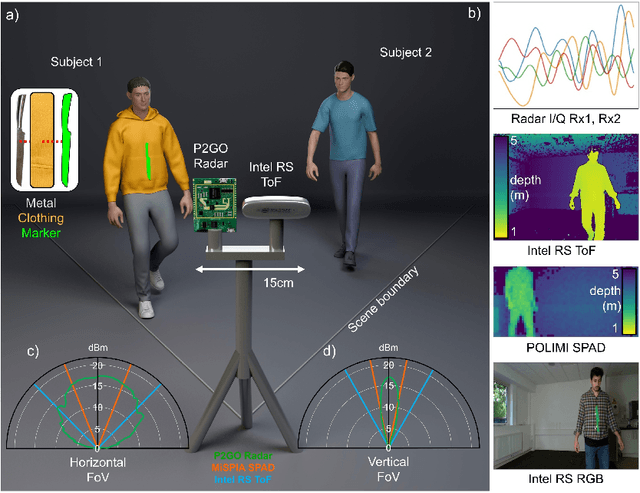

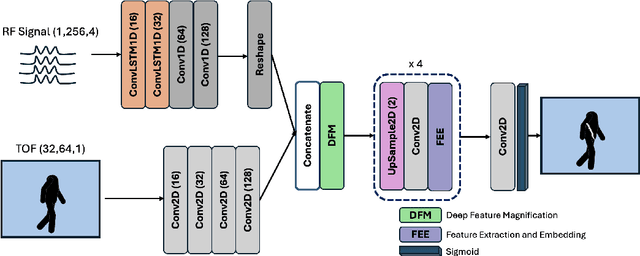
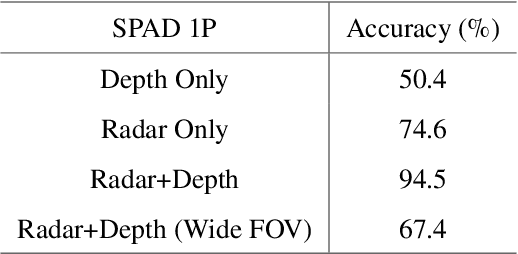
Abstract:In the field of detection and ranging, multiple complementary sensing modalities may be used to enrich the information obtained from a dynamic scene. One application of this sensor fusion is in public security and surveillance, whose efficacy and privacy protection measures must be continually evaluated. We present a novel deployment of sensor fusion for the discrete detection of concealed metal objects on persons whilst preserving their privacy. This is achieved by coupling off-the-shelf mmWave radar and depth camera technology with a novel neural network architecture that processes the radar signals using convolutional Long Short-term Memory (LSTM) blocks and the depth signal, using convolutional operations. The combined latent features are then magnified using a deep feature magnification to learn cross-modality dependencies in the data. We further propose a decoder, based on the feature extraction and embedding block, to learn an efficient upsampling of the latent space to learn the location of the concealed object in the spatial domain through radar feature guidance. We demonstrate the detection of presence and inference of 3D location of concealed metal objects with an accuracy of up to 95%, using a technique that is robust to multiple persons. This work provides a demonstration of the potential for cost effective and portable sensor fusion, with strong opportunities for further development.
This Was (Not) Intended: How Intent Communication and Biometrics Can Enhance Social Interactions With Robots
Mar 20, 2023Abstract:Socially Assistive Robots (SARs) are robots that are designed to replicate the role of a caregiver, coach, or teacher, providing emotional, cognitive, and social cues to support a specific group. SARs are becoming increasingly prevalent, especially in elderly care. Effective communication, both explicit and implicit, is a critical aspect of human-robot interaction involving SARs. Intent communication is necessary for SARs to engage in effective communication with humans. Biometrics can provide crucial information about a person's identity or emotions. By linking these biometric signals to the communication of intent, SARs can gain a profound understanding of their users and tailor their interactions accordingly. The development of reliable and robust biometric sensing and analysis systems is critical to the success of SARs. In this work, we focus on four different aspects to evaluate the communication of intent involving SARs, existing works, and our outlook on future works and applications.
mmSense: Detecting Concealed Weapons with a Miniature Radar Sensor
Feb 28, 2023



Abstract:For widespread adoption, public security and surveillance systems must be accurate, portable, compact, and real-time, without impeding the privacy of the individuals being observed. Current systems broadly fall into two categories -- image-based which are accurate, but lack privacy, and RF signal-based, which preserve privacy but lack portability, compactness and accuracy. Our paper proposes mmSense, an end-to-end portable miniaturised real-time system that can accurately detect the presence of concealed metallic objects on persons in a discrete, privacy-preserving modality. mmSense features millimeter wave radar technology, provided by Google's Soli sensor for its data acquisition, and TransDope, our real-time neural network, capable of processing a single radar data frame in 19 ms. mmSense achieves high recognition rates on a diverse set of challenging scenes while running on standard laptop hardware, demonstrating a significant advancement towards creating portable, cost-effective real-time radar based surveillance systems.
Exploring Human-robot Interaction by Simulating Robots
Sep 20, 2022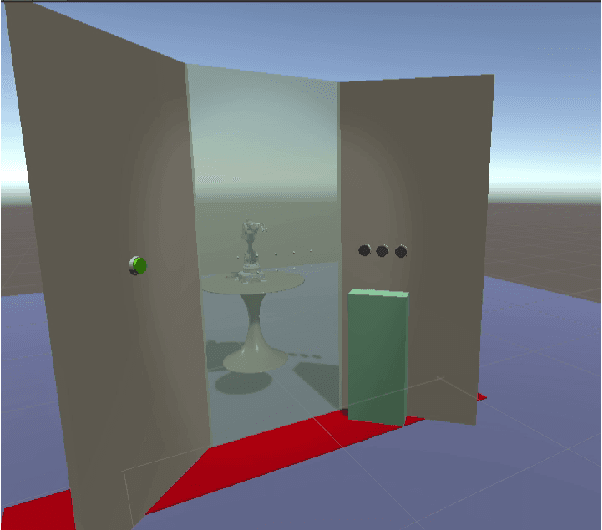
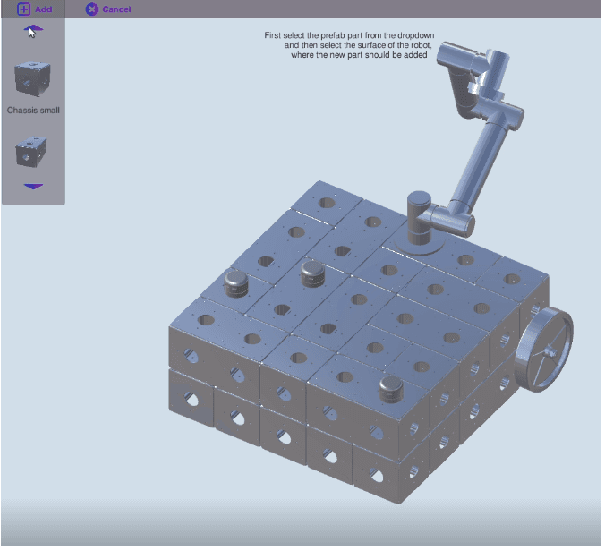
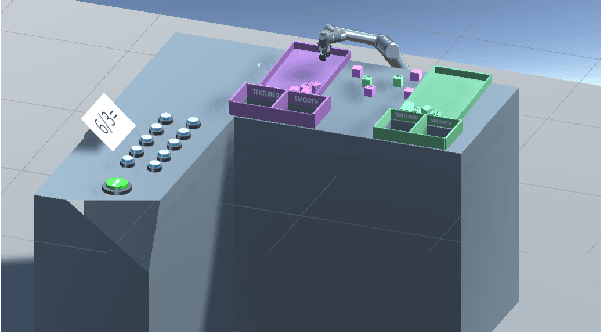
Abstract:As collaborative robots enter industrial shop floors, logistics, and manufacturing, rapid and flexible evaluation of human-machine interaction has become more important. The availability of consumer headsets for virtual and augmented realities has lowered the barrier of entry for virtual environments. In this paper, we explore the different aspects of using such environments for simulating robots in user studies and present the first findings from our own research work. Finally, we recommend directions for applying and using simulation in human-robot interaction.
 Add to Chrome
Add to Chrome Add to Firefox
Add to Firefox Add to Edge
Add to Edge